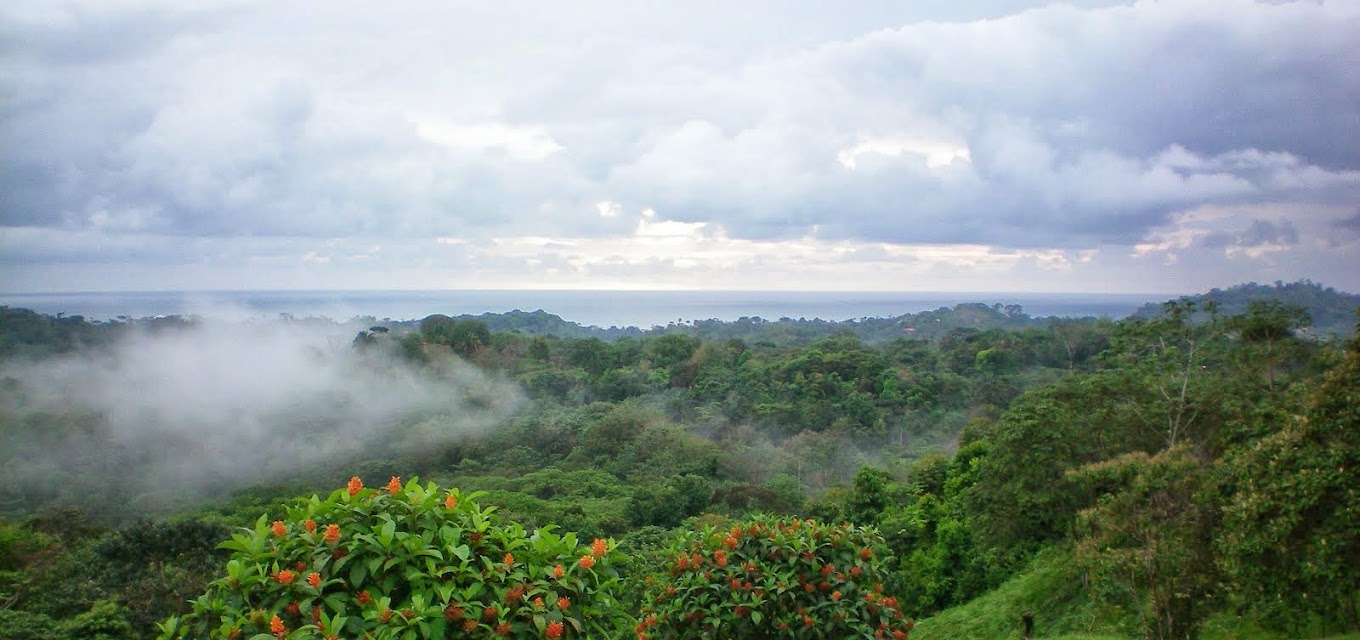The Magnificent Blue Morpho butterfly is the most conspicuous and well-known rainforest butterfly. It lives in Costa Rica among other tropical rainforest areas. This butterfly distinguishes itself by the amazing iridescent blue on the upper side of its wings; however, on the underside, they are brown. They fold back their wing in such a way that the bright blue is hidden, leaving the brown side with many eye spots to blend with the background as a form of camouflage against predatory birds like the jacamar and flycatcher, which are the adult butterfly’s natural predators; besides, their fast, irregular “tipsy-doodling” flight makes them difficult to pursue.
 The blue morpho is among the largest butterflies in the world, with wings spanning from five to eight inches. Their vivid, iridescent blue coloring is a result of the microscopic scales on the backs of their wings, which reflect light. When the blue morpho flies, the contrasting bright blue, and dull brown colors flash, making it look like the morpho is appearing and disappearing. The males’ wings are broader than those of the female are, and appear to be brighter in color. Blue morphos, like other butterflies, also have two clubbed antennas, two fore wings and two hind wings, six legs and three-body segments: the head, thorax, and abdomen.
The blue morpho is among the largest butterflies in the world, with wings spanning from five to eight inches. Their vivid, iridescent blue coloring is a result of the microscopic scales on the backs of their wings, which reflect light. When the blue morpho flies, the contrasting bright blue, and dull brown colors flash, making it look like the morpho is appearing and disappearing. The males’ wings are broader than those of the female are, and appear to be brighter in color. Blue morphos, like other butterflies, also have two clubbed antennas, two fore wings and two hind wings, six legs and three-body segments: the head, thorax, and abdomen. The butterflies pass through four stages of development in their cycle to reproduce: the blue morpho butterfly starts its metamorphosis as an egg and then hatches out as a caterpillar or larvae.
 The caterpillar eats a lot as they grow and spins silk threads to make a cocoon, this stage is called pupa or chrysalis, later on, the butterfly comes out of the chrysalis. The blue morpho butterfly has the habit of sleeping at night and moves during the day. They can fly and walk.
The caterpillar eats a lot as they grow and spins silk threads to make a cocoon, this stage is called pupa or chrysalis, later on, the butterfly comes out of the chrysalis. The blue morpho butterfly has the habit of sleeping at night and moves during the day. They can fly and walk.
 The caterpillar eats a lot as they grow and spins silk threads to make a cocoon, this stage is called pupa or chrysalis, later on, the butterfly comes out of the chrysalis. The blue morpho butterfly has the habit of sleeping at night and moves during the day. They can fly and walk.
The caterpillar eats a lot as they grow and spins silk threads to make a cocoon, this stage is called pupa or chrysalis, later on, the butterfly comes out of the chrysalis. The blue morpho butterfly has the habit of sleeping at night and moves during the day. They can fly and walk.The blue morpho’s diet changes throughout each stage of its life cycle. As a caterpillar, it chews leaves of many varieties, but prefers to dine on plants in the pea family. When it becomes a butterfly, it can no longer chew, but drinks its food instead. Adults use a long, protruding mouth part called a proboscis as a drinking straw to sip the juice of rotting fruit, the fluids of decomposing animals, tree saps, fungi, and wet mud. Blue morphos taste the fruit with sensors on their legs, and they "taste-smell" the air with their antennae, which serve as a combined tongue and nose.
Blue morphos are severely threatened by deforestation of tropical forests and habitat fragmentation. Some humans represent a direct threat to this spectacular creature because their beauty attracts artists and collectors from all over the globe who wish to capture and display them. In Costa Rica, blue morphos can be seen on both coasts; however, on the Pacific side of the country, they are more abundant in the rainy season while on the Atlantic side, morphos are more visible during the dry season.
No matter when you visit Costa Rica, most likely there will be a Blue Morpho Butterfly ready to greet you.
When you come to Costa Rica, make sure you include in your itinerary a visit to the Butterfly Botanical Gardens in Manuel Antonio, http://www.wildliferefugecr.com/
The Butterfly Botanical Garden is a large, mesh-covered conservatory – a multi-level living laboratory. Inside the net, there are strategically located tropical plants and flowers, each one chosen for the specific role they play in the life cycle of butterflies. Butterflies bob, weave, float, and zigzag everywhere, and sometimes they land on your shoulder. It is very cool to see these insects in their natural environment.


















